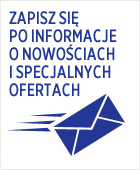


W naszej księgarni on-line znajdziesz książki zagraniczne, publikacje naukowe, przewodniki oraz szeroki wybór literatury dla najmłodszych. Wszystkim poszukującym książek w języku angielskim polecamy nowości wydawnicze i bestsellery, jak również ponadczasową "klasykę gatunku". Nie znalazłeś tytułu, który Cię interesuje? Skontaktuj się z naszym Biurem Obsługi Klienta i złóż zamówienie on-line albo odwiedź nasze księgarnie stacjonarne w Warszawie, Krakowie, Gdański oraz Poznaniu. Od wielu lat z powodzeniem dostarczamy książki specjalistyczne z każdej dziedziny naukowej. Współpraca z takimi renomowanymi wydawnictwami jak Pearson, Elsevier, Springer, Wolters Kluwer, Oxford oraz Cambridge pozwala na bieżąco aktualizować naszą ofertę o najnowsze zagraniczne książki naukowe.